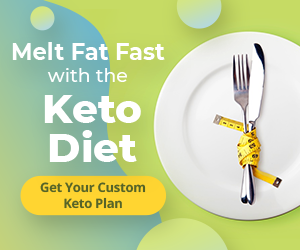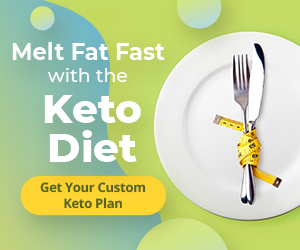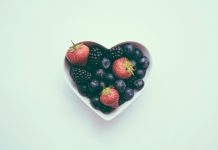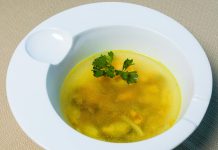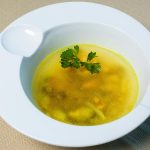What to Eat and Avoid on the Ketogenic Diet: A Complete Food List and 7-Day Sample Menu
If you’re looking to get a jump start on your health and fitness goals this year, you may be thinking about trying the ketogenic diet. Maybe you’ve heard the phrase before — it’s a huge diet buzzword — but aren’t sure what it means. Here’s a primer: The ketogenic diet is an eating plan that drives your body into ketosis, a state where the body uses fat as a primary fuel source (instead of carbohydrates), says Stacey Mattinson, RDN, who is based in Austin, Texas.
When you’re eating the foods that get you there (more on that in a minute), your body can enter a state of ketosis in one to three days, she adds. During the diet, the majority of calories you consume come from fat, with a little protein and very little carbohydrates. Ketosis also happens if you eat a very low-calorie diet — think doctor-supervised, only when medically recommended diets of 600 to 800 total calories.
The Potential Benefits and Risks of the Keto Diet
There are three instances where there’s research to back up a ketogenic diet, including to help control type 2 diabetes, as part of epilepsy treatment, or for weight loss, says Mattinson. “In terms of diabetes, there is some promising research showing that the ketogenic diet may improve glycemic control. It may cause a reduction in A1C — a key test for diabetes that measures a person’s average blood sugar control over two to three months — something that may help you reduce medication use,” she says.
One major downside to the ketogenic diet regarding diabetes is that you’re eating a lot of fat, and that fat may be saturated, which is unhealthy. Because people with type 2 diabetes are at an increased risk for cardiovascular disease, there’s concern that the saturated fat in the diet may drive up LDL, or “bad,” cholesterol levels, and further increase the odds of heart problems. If you have type 2 diabetes, talk to your doctor before attempting a ketogenic diet. They may recommend a different weight-loss diet for you, like a reduced-calorie diet. Those with epilepsy should also consult their doctor before using this as part of their treatment plan.
In terms of weight loss, you may be interested in trying the ketogenic diet because you’ve heard that it can make a big impact right away. And that’s true. “Ketogenic diets will cause you to lose weight within the first week,” says Mattinson. She explains that your body will first use up all of its glycogen stores (the storage form of carbohydrate). With depleted glycogen, you’ll drop water weight. While it can be motivating to see the number on the scale go down (often dramatically), do keep in mind that most of this is water loss initially.
But the keto diet can be effective over time. One review suggested the keto diet can spur fat loss in obese people when used for a couple of weeks and up to one year. A meta-analysis noted that one reason for weight loss is likely that keto diets suppress hunger.
The downside to a ketogenic diet for weight loss is the difficulty maintaining it. “Studies show that weight loss results from being on a low-carb diet for more than 12 months tend to be the same as being on a normal, healthy diet,” says Mattinson. While you may be eating more satiating fats (like peanut butter, regular butter, or avocado), you’re also way more limited in what’s allowed on the diet, which can make everyday situations, like eating dinner with family or going out with friends, far more difficult. Because people often find it tough to sustain, it’s easy to rely on it as a short-term diet rather than a long-term lifestyle.
Before starting, ask yourself what is really realistic for you, Mattinson suggests. Then get your doctor’s okay. You may also work with a local registered dietitian nutritionist to limit potential nutrient deficiencies and talk about vitamin supplementation, as you won’t be eating whole grains, dairy, or fruit, and will eliminate many veggies. “A diet that eliminates entire food groups is a red flag to me. This isn’t something to take lightly or dive into headfirst with no medical supervision,” she says.
What to Keep in Mind When Creating Your Ketogenic Meal Plan
If you’ve decided to move forward in trying the keto diet, you will want to stick to the parameters of the eating plan. Roughly 60 to 80 percent of your calories will come from fats. That means you’ll eat meats, fats, and oils, and a very limited amount of nonstarchy vegetables, she says. (This is different from a traditional low-carb diet, as even fewer carbs are allowed on the keto diet.)
The remaining calories in the keto diet come from protein — about 1 gram (g) per kilogram of body weight, so a 140-pound woman would need about 64 g of protein total. As for carbs: “Every body is different, but most people maintain ketosis with between 20 and 50 g of net carbs per day,” says Mattinson. Total carbohydrates minus fiber equals net carbs, she explains.
One thing to remember: “It’s easy to get ‘kicked out’ of ketosis,” says Mattinson. Meaning, if you eat something as small as a serving of blueberries, your body could revert to burning carbohydrates for fuel rather than fat.
Wondering what fits into a keto diet — and what doesn’t? “It’s so important to know what foods you’ll be eating before you start, and how to incorporate more fats into your diet,” says Kristen Mancinelli, RD, author of The Ketogenic Diet: A Scientifically Proven Approach to Fast, Healthy Weight Loss, who is based in New York City. We asked her for some guidelines.
Protein
Liberally: (That said, ketogenic diets aren’t high in protein, they focus on fat, so these should all be consumed in moderation.)
- Grass-fed beef
- Fish, especially fatty fish, like salmon
- Dark meat chicken
Occasionally:
- Bacon
- Low-fat proteins, like skinless chicken breast and shrimp. These are great to include in your keto diet, but add a sauce on top for some fat rather than eating plain.
Never:
- Cold cuts with added sugar (read the label!)
- Meat that has been marinated in sugary sauces
- Fish or chicken nuggets
Oil and Fat
Liberally:
- Avocado oil
- Olive oil
- Coconut oil
- Butter
- Heavy cream
Occasionally: (Limit your consumption, which should be easy to do when avoiding packaged foods, which these are often found in.)
- Sunflower oil
- Safflower oil
- Corn oil
Never:
- Margarine
- Artificial trans fats
Fruits and Veggies
Liberally:
- Avocado
- Leafy greens, like spinach and arugula
- Celery
- Asparagus
Occasionally: (These are still great choices, but you’ll also need to count these carbs.)
- Leeks
- Spaghetti squash
- Eggplant
Never:
- Potatoes
- Corn
- Raisins
Nuts and Seeds
Liberally:
- Walnuts
- Almonds
- Flax and chia seeds
Occasionally:
- Unsweetened nut butters (almond or peanut butter)
- Cashews
- Pistachios
Never:
- Trail mixes with dried fruit
- Sweetened nut or seed butters
- Chocolate-covered nuts
Dairy Products
Liberally:
- Cheddar cheese
- Blue cheese
- Feta cheese
Occasionally:
- Full-fat cottage cheese
- Full-fat plain Greek yogurt
- Full-fat ricotta cheese
Never:
- Milk
- Sweetened nonfat yogurt
- Ice cream
Sweeteners
Liberally: Practice moderation with sweeteners.
Occasionally:
- Stevia
- Erythritol
- Xylitol
Never:
- Agave
- Honey
- Maple syrup
- White and brown sugars
Condiments and Sauces
Liberally:
- Guacamole
- Lemon butter sauce
- Mayonnaise (ensure there’s no sugar added)
Occasionally:
- Raw garlic
- Tomato sauce (look for those with no added sugar)
- Balsamic vinegar
Never:
- Barbecue sauce
- Ketchup
- Honey mustard
Drinks
Liberally:
- Water
- Almond milk
- Bone broth
- Plain tea
Occasionally:
- Black coffee (watch caffeine consumption)
- Unsweetened carbonated water (limit only if bubbles make you bloated)
- Zero-calorie drinks
Never:
- Soda
- Fruit juice
- Lemonade
Herbs and Spices
Liberally: (All herbs and spices fit in a keto diet, but if you’re using large amounts, Mancinelli recommends counting the carbs.)
- Salt (salt foods to taste)
- Pepper
- Thyme, oregano, paprika, and cayenne
Occasionally: (These are still great choices, but contain some carbs.)
- Ground ginger
- Garlic powder
- Onion powder
Never:
- Herbs and spices are generally okay to use in small amounts to add flavor to foods.
Supplements
Consider taking:
- Fiber
- Multivitamin
Optional: (These help you produce ketones more quickly, but Mancinelli says she has no opinion either way on recommending you take them or not.)
- MCT oil
- Exogenous ketones
Following are some of the best foods to eat on the keto diet, along with their serving sizes and an explanation of why they’re good for people following this eating approach.
Avocado Oil
Per 1 tablespoon (tbsp) serving: 124 calories, 0g net carbs, 0g protein, 14g fat
Benefits: This is a good source of heart-healthy monounsaturated fatty acids.
Canola Oil
Per 1 tbsp serving: 124 calories, 0g net carbs, 0g protein, 14g fat
Benefits: Research has shown that consumption of canola oil can reduce total and bad cholesterol.
Coconut Oil
Per 1 tbsp serving: 116 calories, 0g net carbs, 0g protein, 14g fat
Benefits: While high in saturated fat, coconut oil may increase “good” HDL cholesterol levels.
MCT Oil
Per 1 tbsp serving: 115 calories, 0g net carbs, 0g protein, 14g fat
Benefits: Derived from coconut, MCT stands for medium chain triglycerides. Limited research suggests MCT oil may aid in weight loss and help promote ketosis.
Butter
Per 1 tbsp serving: 100 calories, 0g net carbs, 0g protein, 11g fat
Benefits: Though the serving provides 11g of saturated fat, research has found that butter wasn’t a major factor in increasing risk of chronic conditions, like heart disease or diabetes.
Cheddar Cheese
Per 1 slice serving: 113 calories, 0g net carbs, 7g protein, 9g fat
Benefits: Cheese is allowed as you please, but cheddar is a good example of its nutrition stats. One study found that cheese eaters had a 12 percent lower risk of type 2 diabetes.
Heavy Cream
Per 1 tbsp serving: 52 calories, 0g net carbs, 0g protein, 5g fat
Benefits: This is an easy way to add calories and fat into a ketogenic diet.
Bacon
Per 1 slice serving: 43 calories, 0g net carbs, 3g protein, 3g fat
Benefits: The green light on bacon may be one reason you’re up for sticking to the diet, as it can make eating occasions more palatable. Just watch the sodium content, as it can add up quickly.
Chicken Thigh
Per 1 thigh serving: 318 calories, 0g net carbs, 32g protein, 20g fat
Benefits: Leave the skin on here for extra fat. One thigh is a good source of selenium, zinc, and B vitamins.
Eggs
Per 1 egg serving: 77 calories, 1g net carbs, 6g protein, 5g fat
Benefits: Eggs contains the perfect duo of satiating protein and fat; they’re also high in the antioxidant mineral selenium.
Ground Beef
Per 3-ounce (oz) serving (measured raw): 279 calories, 0g net carbs, 12g protein, 24g fat
Benefits: Ground beef (made with 70 percent lean meat and 30 percent fat) is a higher-fat choice — but that’s the point here. You’ll also get an excellent source of vitamin B12, which is necessary to keep energy levels up.
New York Strip Steak
Per 3-oz serving: 224 calories, 0g net carbs, 22g protein, 14g fat
Benefits: You’ll get an impressive amount of muscle-building protein plus satiating fat in this option. It’s also rich in zinc, a mineral that promotes proper thyroid functioning.
Asparagus
Per 1 cup (raw) serving: 27 calories, 2g net carbs, 3g protein, 0g fat
Benefits: Asparagus contains bone-building calcium, plus other minerals, such as potassium and magnesium, which has been linked with blood sugar regulation.
Avocado
Per ½ avocado serving: 160 calories, 2g net carbs, 2g protein, 15g fat
Benefits: The creamy fruits are packed with fiber, something that you may lack on the keto diet. They also are an excellent source of immune-revving vitamin C.
Bok Choy
Per 1 cup (shredded) serving: 9 calories, 1g net carbs, 1g protein, 0g fat
Benefits: Chinese cabbage is a rich source of vitamins A and C, plus offers some calcium and energy-revving iron.
Cauliflower
Per 1 cup (raw) serving: 25 calories, 2g net carbs, 2g protein, 0g fat
Benefits: Provides more than three-quarters of your vitamin C quota in a day; with 3 g of fiber, it’s also a good source of the heart-healthy nutrient.
Celery
Per 1 cup (raw) serving: 16 calories, 1g net carbs, 1g protein, 0g fat
Benefits: Celery is one of the most hydrating veggies out there. These crunchy spears also contain vitamins A and K, and folate.
Cucumber
Per ½ cup (slices) serving: 8 calories, 2g net carbs, 0g protein, 0g fat
Benefits: Cucumbers are high in water, making them a hydrating choice. They’re also a surprisingly good source of vitamin K, a vitamin important for proper blood clotting and bone formation.
Green Peppers
Per 1 cup (sliced) serving: 18 calories, 2g net carbs, 1g protein, 0g fat
Benefits: Along with more than a day’s requirements for vitamin C, they’re also a good source of vitamin B6, which plays a role in more than 100 enzyme reactions in the body.
Lettuce
Per 1 cup (shredded) serving: 5 calories, 1g net carbs, 0g protein, 0g fat
Benefits: Leafy greens can add bulk to your meals for very few calories, as well as skin-strengthening vitamins A and C.
Mushrooms
Per 1 cup (raw) serving: 15 calories, 1g net carbs, 2g protein, 0g fat
Benefits: Mushrooms are known for their potential immune-boosting properties, as one study suggested. They’re also an excellent source of B vitamins.
Zucchini
Per 1 cup (sliced, raw) serving: 18 calories, 3g net carbs, 1g protein, 0g fat
Benefits: This is a great way to sneak in additional fiber, and the veggie also offers a good source of manganese, a mineral that helps form bone and aids in blood sugar control.
A 7-Day Sample Menu for the Keto Diet

